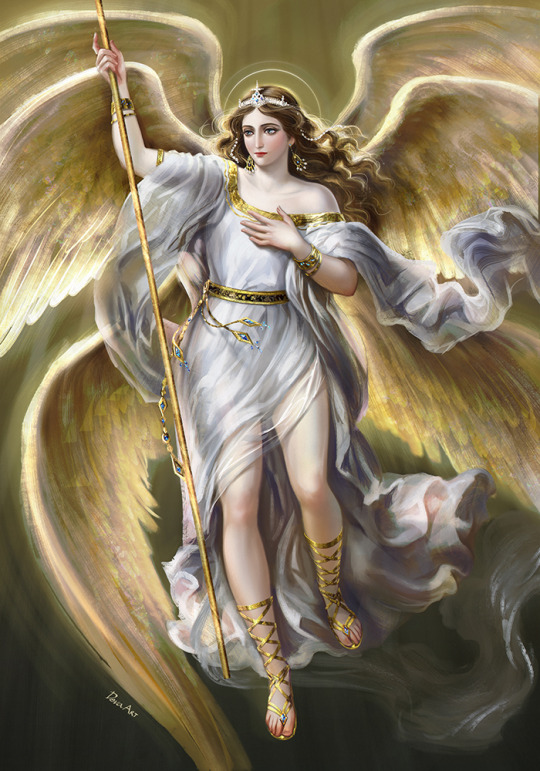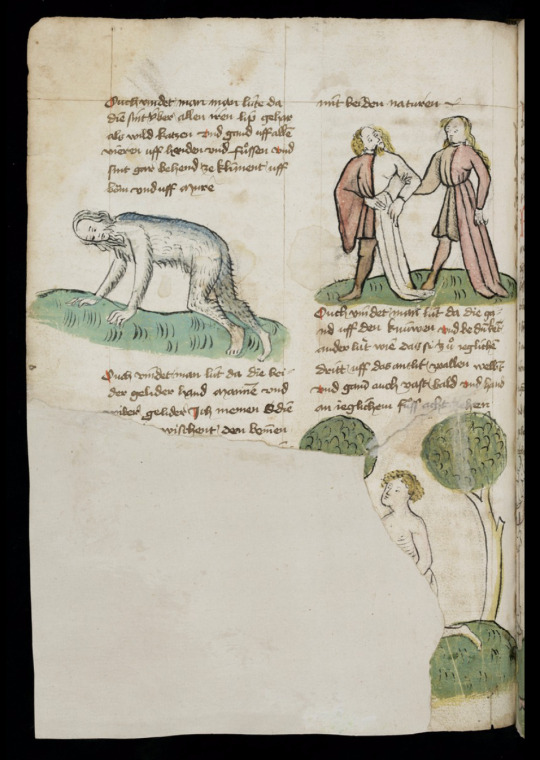ODETE'S HISTORICAL ARCHIVE - - - - - BETWEEN MY RESEARCH ON **TRANS** EXISTENCE IN THE PAST AND PARANOID HINTS AT THAT SAME EXISTENCE IN OBJECTS AND IMAGES OF LONG GONE ERAS -- A MOOD BOARD FOR THE USE OF ARCHAEOLOGY AS PLAY TOOL www.odete.pt instagram: @odetetheslayer
Don't wanna be here? Send us removal request.
Text


I started this work back in 2017 and put it on the back burner. Now it's the new year 2024, I remembered that I haven't drawn my favorite archangel for a long time. Let me remind you that in Byzantium the image of angels was formed on the basis of palace eunuchs, whose androgynous beauty is compared with the pure beauty of angels, which is why I was interested in reconstructing this image.
"The angels' appearance, stature, gait, and role in the celestial palace mirror the functions of eunuchs in the terrestrial court. As in the celestial court, access to the emperor passes through the rings of eunuchs surrounding his throne. This angelic guard is characterized with long and slender bodies, snowy white skin, and radiant garments of purple and gold. The image of these angels reveals the Byzantine perception of the ideal court eunuch: young, possessing extraordinary beauty, with radiant skin and hair, dressed in purple-golden silks and linens (Res: Anthropology and Aesthetics, 51: Spring 2007)" "Another possible explanation can also be derived from physiognomy, though coining to adverse conclusion. The handsome eunuch, whose physical beauty reflects the beauty of his soul, is a common subject in writings from the early Byzantine period. The vision of the luminous beauty of eunuchs, associated with purity and the soul's beauty, finds an important development in relation to angels, resulting in eunuchophilia. Eunuchs and angels are both royal messengers and they both introduce dignitaries to the sovereign. A dream-interpreting work, dated from the ninth to the eleventh centuries, indicates that if one dreams of a gracious and tall eunuch, the eunuch should be considered an angel, because a eunuch resembles an angel an being pure and does not feel carnal desire (Drexl 1925:10)."
27 notes
·
View notes
Text

according to the description at the rijksmuseum
"The beautiful Bathsheba bathes out of doors assisted by two maidservants. King David spies the young woman from the roof of his palace and instantly falls in love. Although he is not depicted in the painting, David’s presence is suggested by the castle in the distance. Curiously, the servant seen from behind has a male body."
underline that last sentence:
"Curiously, the servant seen from behind has a male body."
0 notes
Text

Raden Saleh, scion of a Javanese regent family, came to the Netherlands in 1829 to study painting. Here we still see him as a European dandy before a Western seascape. However, he soon specialized in oriental scenes, and began dressing as a Javanese prince. Back on Java (1851), Raden Saleh built a small neo-Gothic palace, where he received the European elite. And so he constantly shifted between his Javanese and his European identity.
0 notes
Text

Thomas Hall, born Thomasine Hall (c.1603[1][verification needed] – after 1629), was an English intersex person and servant in colonial Virginia whose wearing of female attire and, on subsequent investigation, a liaison with a maid provoked public controversy in 1629.[2] Hall was subjected to a physical inspection, and the case reached the Quarter Court at Jamestown, which ruled that Hall was both a man and a woman and must dress in male and female clothing simultaneously.
Hall's given name is typically written as "Thomas(ine)" or "Thomas/ine" in scholarly literature on the case.
12 notes
·
View notes
Text

Catterina Vizzani, known as Giovanni Bordoni (1719–1743), was an Italian person who became famous after death for living life as a man, despite being known as a woman early in life and after death.
Vizzani was born to a carpenter in Rome. At some point, Vizzani ran away from home to Viterbo, and adopted male clothing and the male identity of Giovanni Bordoni.
Giovanni Battista Bianchi, an Italian surgeon, examined Vizzani's remains to establish if there were any physical explanation of Vizzani’s sexual orientation. Vizzani's funeral was widely attended, as the public regarded the deceased as a woman who died for virginity.
Bianchi later published a biography of Vizzani titled Breve storia della vita di Catterina Vizzani romana che per ott'anni vesti abito da uomo in qualita di servidore, la quale dopo varj casi essendo in fine stata uccisa fu trovata pulcella nella sezzione del suo cadavero di Giovanni Bianchi professore di Notomi in Siena (Venezia: Occhi, Simone, 1744), making Vizzani famous. It was later translated to English as The True History and Adventures of Catharine Vizzani (1751).
0 notes
Text

Catharina Margaretha Linck (died 1721) was a Prussian woman who presented as a man for the majority of her adult life. Linck married a woman and, based on their sexual activity together, was convicted of sodomy and executed by order of King Frederick William I in 1721. Linck's execution was the last for lesbian sexual activity in Europe and an anomaly for its time.
2 notes
·
View notes
Text

The Enarei, singular Enaree, were Scythian androgynous/effeminate priests and shamanistic soothsayers who played an important role in the Scythian religion.
Rituals
The Anarya used cannabis in their rituals, including both those of a communal and those of a funerary or psychopompic nature, thus being among the earliest spiritual practitioners to have used cannabis to achieve altered states of consciousness, implying that that an ancient connection existed between gender non-conforming spiritual practitioners and the use of mind-altering substances..[5]
The Anarya participated in Scythian funeral rituals, which included shamanic practises, and after the burial of the deceased, they would ritually cleanse themselves with the vapour of cannabis, which is attested archaeologically in Saka tombs from Siberia, which contained tripods, braziers, pelts, and charcoal containing remains of cannabis leaves and fruits, with one of the Pazyryk burials containing a pot, inside of which were cannabis fruits, as well as a copper censer used to burn cannabis.[5]
Divination
The Anarya also acted as seers and performed a particular form of divination which used the inner bark of the linden tree, unlike the methods of traditional Scythian soothsayers which used willow withies.[6] The method of divination of the Anarya consisted of cutting the inner linden bark into three pieces, and plaiting and unplaiting these pieces around their fingers to obtain answers.[7][5]
The Anarya were especially consulted when the king of the Scythians was ill,[8][5] which was itself believed by the Scythians to be caused by a false oath being sworn upon the king's hearth.[6] Once the Anarya had identified the suspect who had sworn the false oath, the said suspect would claim to be innocent. If the Anarya maintained the accusation, six more soothsayers were consulted, and if they upheld the original accusation, the suspect was executed by being beheaded. If the additional soothsayers declared the suspect was innocent, the process of consulting more soothsayers was repeated, and if the larger number of soothsayers still declared the suspect to be innocent, the initial accusers were executed by being put into a wagon filled with brushwood which was set on fire, and their sons were all killed.[9]
23 notes
·
View notes
Text











some scans of the zine "ON EROTO-HISTORIOGRAPHIES AND PARANOID ARCHAEOLOGIES", by Odete and designed by Internet Jane
0 notes
Text


Ferdinand "Andreas" Edvard Bruce, born as Christina "Therese" Isabelle Jeanette Louise Bruce (1808–1885), was a Swedish memoir writer. His story was the first memoir written by a transsexual person in Sweden and is regarded as unique in many aspects
(via wikipedia)
0 notes
Text

Os “Sambenitos” eram os condenados pela Inquisição, que vestidos deste modo peculiar, empunhando uma enorme vela acesa, dirigiam-se em procissão para o suplício em auto-de-fé.
0 notes
Text

A “Diana” de Jorge de Montemor, originalmente escrita em castelhano e publicada em valencia em 1559. Romance pastoril que relata as aventuras amorosas entre duas pastoras serrenhas, que experimentam o prazere de amar sem limites de género nem fronteiras de pecado.
3 notes
·
View notes
Photo

Wild and and non-binary-sexed figures, Jean de Mandeville, Antichrist (Travels of Sir John Mandeville), St.Gallen, Stiftsarchiv, Cod.Fab.XVI, f.66v. Photo: www.e-codices.ch
0 notes
Photo

Non binary sexed figures. Livre des Merveilles (Mandeville’s Travels), BNF.
1 note
·
View note
Text
once again begging people to recognize that "these people & behaviors were punished by society" and "these people existed & these behaviors were expressed, often openly, despite everything" are ideas that can, should, & must coexist in your conception of history
346 notes
·
View notes
Text
As long as humanity has had beliefs in a higher power, the use of magic, spells, curses, and incantations have featured widely across cultures. A number of influential texts or ‘grimoires’ (textbooks of magic) were developed over the centuries, many of which became the books of choice for secret societies and occult organizations that endured well into the twentieth century. Here we feature five manuscripts that provide a fascinating window into the magic of the ancients.
58 notes
·
View notes
Link
15 notes
·
View notes
